2016
Kim Moodie: Any Dream Will Do
Curated by James Patten
March 18th to May 14th, 2016
Opening reception: March 18th at 8PM
Long recognized for his incredibly detailed, densely-packed imagery, London-based artist Kim Moodie has recently made unexpected forays into photography and video that, as he puts it, “breathe through time”. This exhibition will be the first time audiences will see these startling new perspectives on themes he has explored previously only in painting and drawing. Those looking forward to seeing Moodie’s more familiar work will not, however, be disappointed. The exhibition also features several large, boldly-coloured new paintings installed side-by-side with their preparatory drawings.
Since 1980 Professor Moodie has taught in the Department of Visual Arts at Western and first exhibited at McIntosh Gallery the following year. During the ensuing decades his work has been shown at the National Gallery of Canada, Oakville Galleries, Jessica Bradley Gallery, Art Gallery of Ontario, and Threadwaxing Gallery, New York. In 2011 he was the subject of a major solo exhibition, Kim Moodie: All But Not, curated by Cassandra Getty at Museum London. A testament to his influence and reach within Canada’s cultural community, the exhibition’s catalogue featured twelve texts by distinguished Canadian visual artists and writers including Robert Enright, Micah Lexier, Adrian Norvid, Ed Pien, Jeannie Thib and Jane Urquhart.
Picking up where the Museum London exhibition left off, and taking up new ideas about the fleeting nature of life, love, and the artist’s career, Any Dream Will Do explores the concept of time as a rapid progression of transient fluidity. Staging himself as a model in both the photographs and videos, Moodie enacts a variety of roles—lounge singer, rock musician, clown—to reflect upon identity as a performative process of accumulation and loss. Boldly placing himself at centre stage, Moodie’s Ecce Homo performances reveal the ageing artist’s persona as a constructed representation of accumulated truths and fictions, strengths and vulnerabilities, talents and inadequacies.
For an artist who has long maintained a degree of self-effacing anonymity, squarely keeping himself out of the limelight behind his work, this recent move to in front of the camera coincides with a self-liberating freedom from the carefully-constructed distinction between the artist and his work. His long flowing grey hair features prominently in the videos and photographs. Not unlike his tangled linear drawings, Moodie uses it to great effect as a screening device to obscure his identity, a symbol of the way identity comprises myriad strands of experience and, most tellingly, as a physical manifestation of passing time. In more ways than one, Moodie lets his hair down, and the resulting works are beguiling and profound.
Leading the Way: Early Canadian Women Artists
Curated by Catherine Elliot Shaw
March 18 to May 14, 2016
Opening reception, Friday, March 18th at 8PM
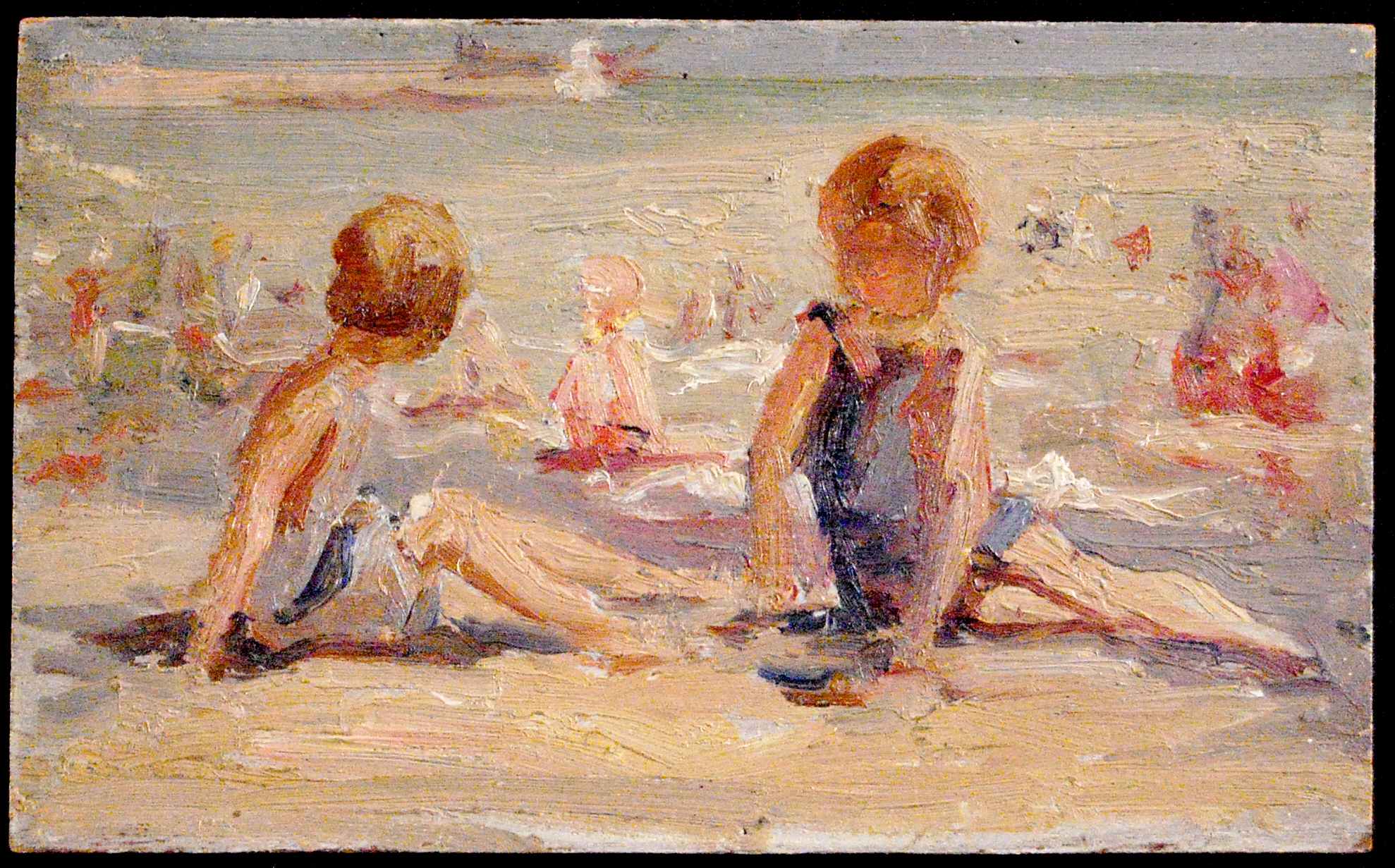 During the late nineteenth and early twentieth centuries, women artists encountered many obstacles in the pursuit of their artistic careers. Marriage and family responsibilities, limited educational and professional opportunities and, in some cases, the requirement to be self-supporting all challenged their creative practices. As a result, they frequently chose subjects based on personal experience such as landscape, portraiture and still life and their work was consequently considered outside mainstream trends and attracted little attention.
During the late nineteenth and early twentieth centuries, women artists encountered many obstacles in the pursuit of their artistic careers. Marriage and family responsibilities, limited educational and professional opportunities and, in some cases, the requirement to be self-supporting all challenged their creative practices. As a result, they frequently chose subjects based on personal experience such as landscape, portraiture and still life and their work was consequently considered outside mainstream trends and attracted little attention.
This exhibition features early Canadian women artists from the McIntosh Gallery collection. Some, like Laura Muntz Lyall, enjoyed national and international careers while others, such as Mackie Cryderman and Henrietta Hancock Britton, were also pioneering art educators who influenced subsequent generations. All of them persevered against prevailing restrictions to build a lasting legacy of visual creativity.
Leading the Way has been organized to complement the launch later this spring of McIntosh Gallery’s online project, A Driving Force: Women of the London, Ontario Visual Art Community 1867-2017. An interactive, online community resource, this project will document the achievements of the artists, patrons, collectors, donors, writers, critics, administrators, educators and volunteers from London and Middlesex County who, since confederation, have ensured the vibrancy of the visual arts in the region.
In the first phase of the project, Dr. Mark McDayter’s students from the School for Advanced Studies in the Arts & Humanities have undertaken research including video interviews with artists Shelley Niro and Jenna Faye Powell and curator Melanie Townsend. A Canada 150 project, A Driving Force is made possible with funding from the London Arts Council and the invaluable assistance of Nancy Poole and Madeline Lennon, members of the project’s advisory committee. For more information about A Driving Force: Women of the London, Ontario Visual Art Community 1867-2017, contact McIntosh curator Catherine Elliot Shaw at celliots@uwo.ca.
Representing Wilderness: Community, Collaboration and Artistic Practice
June 3rd to June 25th, 2016 Opening reception: June 3rd at 7PM Michael Farnan is a multidisciplinary artist and doctoral candidate at Western University. His research explores Canadian representational history and discourses surrounding colonialism, wilderness, nature and nationhood. Michael’s work employs humour, parody and collaboration as tools for critical inquiry and reflection on how we think about relationships to nature.
Farnan’s thesis exhibition includes two major video installations, drawing and sculptures. The work highlights many of the tensions and struggles found within visual representations of Canada’s iconic landscape, and the local domestic spaces that represent the daily lives of a multiplicity of individual Canadians. Namely through re-enactment of national narratives and a (re)thinking of Nation-to-Nation relationships in Canada between Indigenous and non-Indigenous communities.
The show features a large ink and chalk drawing Group of Seven with Wolf’s Head and Study of Dead Hind; two carved wooden transformation masks, Grey Owl/Pierce Brosnan, and Wolf/Kevin Costner; as well as cast plastic sculptures of Boy Scout figurines fighting in a canoe. Alongside this work is the creation of two major video works featuring lead performances by Lori Blondeau and Adrian Stimson; the work of Cinematographers Clark Ferguson and David Hartman; Sound/Recording artists, Jordan Poniatowski and Joel Alain; and Canoe Dancing by William Brims. The videos, Dance for the Narrows and Pilgrims of the Wild, are a mix of documentary (both fiction and non-fiction), “experimental art video,” and epic nature film. In both these films, Farnan is working within and alongside the “margins” of the grand traditions of cinematic and nationalized representations of the Canadian landscape. In the hopes of offering another voice, and an alternate way of seeing, the Canadian wilderness.
Representing Wilderness is organized by McIntosh Gallery in collaboration with Western University’s Department of Visual Arts PhD program in Art and Visual Culture. For more information click here. This research was supported by the Social Sciences and Humanities Research Council of Canada.
Jason Stovall: THIN SKIN and Mina Moosvipour: Emphatic Tension
Portraits, self and others (it’s complicated) & Ross Bell: Last Stand
This exhibition, which includes paintings, photographs, video and sculpture, examines diverse approaches to portraiture through the work of over twenty contemporary Canadian and international artists including: Stephen Andrews, Shuvinai Ashoona, Barbara Astman, Greg Curnoe, Colin Muir Dorward, Wyn Geleynse, Sky Glabush, Kirtley Jarvis, Jim Kost, Richard Hamilton, Jason McLean, Shelley Niro, Dennis Oppenheim, Gillian Saward, Becky Singleton, Gerard Pas, Jamie Q, Angie Quick, Michael Snow, Jeff Thomas, Joanne Tod and Joyce Wieland.
A highlight of the exhibition will be the first public display of internationally-acclaimed Canadian artist Tony Scherman’s recent portrait of former Western Chancellor Joseph Rotman (1935 –2015), the noted Canadian businessman and philanthropist. Rotman was the founder and benefactor of many successful organizations, including the Rotman Research Institute, the Rotman School of Management, and the Rotman Institute of Philosophy at Western.
Ross Bell: Last Stand September 22, 2016 to July 15, 2017 McIntosh Gallery Sculpture Garden Opening reception, Thursday, September 22nd at 7:00 P.M. This interactive outdoor installation comprises six sculptures based on the Muk Yan Jong, or “wooden man post” used for training in the Wing Chun form of Kung Fu. Each figure is made from ash trees cut down because of emerald ash borer. As an abstraction of the human body, Muk Yan Jong predate by several centuries similar modernist sculpture, which they resemble.
For Bell the exhibition title, Last Stand, evokes several tangential associations: the decimated ash trees of southwestern Ontario, a defensive military front, and the artist’s position as a maker of things in an increasingly virtual world.
Born in Alberta, Ross Bell lives in London, Ontario, where he has exhibited at DNA Artspace and Westland Gallery. He has also shown at the Art Gallery of Guelph and Chela Gallery, Baltimore. Bell is represented by Georgia Scherman Projects, in Toronto, where he has also exhibited at Propeller Centre for the Arts, and the Toronto International Art Fair.
The Vancouver Carts: Photographs by Kelly Wood & Below the Belt: Film/Video From the Great Lakes Region
The Vancouver Carts: Photographs by Kelly Wood
November 3 to December 10, 2016
Opening reception: November 3 at 7:00 P.M.
Kelly Wood began photographing Vancouver’s “cart culture” in 2004, documenting the urban phenomenon of repurposed shopping carts used by people experiencing homelessness and others involved in underground economies such as collecting recyclables. Over the next six years, she shot more than 100 carts to produce a series of large-scale photographs emblematic of the conjoined realities of homelessness and gentrification. In so doing, The Vancouver Carts implicitly asks us to consider the problematic physical and social presence of the contemporary art world in such contested urban spaces.
The Vancouver Carts: Photographs by Kelly Wood is also a book, which expands upon the exhibition, reproducing over 100 images selected by the artist and featuring essays by Clint Burnham, Max Haiven and Kirsty Robertson. It will be launched at Art Toronto 2016 by McIntosh Gallery and Black Dog Publishing and available at the exhibition opening reception on November 3rd at 7:00 P.M.
Wood’s work has been widely exhibited in Canada at the Canadian Museum of Contemporary Photography, the Art Gallery of Ontario, The Power Plant, the Musée des beaux-arts de Montréal, the Vancouver Art Gallery and the Morris and Helen Belkin Gallery. Her work has been shown internationally at: the Akademie der Künste, Berlin; Museum Van Hedendaagse Kunst Antwerpen, Antwerp; Nederlands Fotomuseum, Rotterdam; and Artspace in Sydney, Australia. Kelly Wood lives in London, Ontario where she is a professor in the Department of Visual Arts, Western University.
Below The Belt: Film/Video from the Great Lakes Region
Curated by Christine Negus
November 3 to December 10, 2016
Opening Reception: November 3 at 7:00 P.M.
Below the belt is a term used to describe a resolutely lawless level of cruelty. It’s kicking you when you’re down. It’s adding insult to injury. Basically, it’s just plain unfair. But do the sadistic wallops describe a swift kick to the ankle or do they refer to a specifically stinging target that is often and eloquently danced around?
Low blows always hit where it hurts. We have seen the same strikes delivered time and time again in slapstick comedies and cartoons. In the 105th episode of King of the Hill, Bobby Hill—a loveable, sensitive and often bullied character—tries to enroll in boxing lessons to defend himself against his hyper-masculine aggressors. The class turns out to be full, and Bobby, stricken with panic, takes the next best course—women’s self-defense. With the command to hit “the most vulnerable areas of male anatomy” Bobby and the class master the art of hitting below the belt as they are expertly instructed to kick a defense dummy in the groin.
What does it mean to attack the “epicentre of virility”? Purportedly, it is a hit reserved only for the weak. Yet, if pain is the name of game then this is a home run. Bobby successfully continues breaking down both men and teenage boys alike, as they crumble to the ground. Within this new landscape of broken totems of masculinity, Bobby finds new life.
As everyone knows, to be a good capitalist you must be a bit of a dick. Towering phallic buildings pump life into the economy, while the means of creation and production dangle underneath. But what happens when these things are damaged? Are we simply left on our knees, reduced to aching, empty shells?
In this screening, like for Bobby, pain is gain.
By focusing on the canted lens of contemporary video and filmmakers from the Rust Belt, this screening looks at production and degradation not simply as causal effects of industrialization, but as reflexive lines of inquiry. The Rust Belt geographically encompasses the Great Lakes region of Canada and the United States, and was the main locus of urban industrialization. Hosting a variety of endeavors ranging from the extraction and refinement of raw materials to more recent modes of manufacturing, such as the auto industry, these cities flourished with economic fecundity. Yet, this momentum could not be maintained. As production fragmented and became decentralized, cities fell victim to decline, and those once shining examples of economic growth turned into corroded sites of loss.
In the face of decay, works in this screening recontextualize industrialization, situating it within fundamental ideas around creation. These works stress the haptic and tactile in opposition to distant, mechanistic modes of production, bringing industrialization down to the grassroots level of craft. The artists in this screening inhabit these various sites of loss to not only interact with the products forged through industry, but to reclaim the broken and abandoned, creating new meaning. The fallacy of progress is coopted – Beckett’s famous line “the end is in the beginning” has been divisively flipped to suggest the beginning is in the end – and these works reveal that processes of destruction are actually fertile.
-Christine Negus
Guest Curator
Christine Negus is a multidisciplinary artist and writer who won the National Film Board of Canada’s Best Emerging Canadian Video/Filmmaker award at Images Festival in 2008. She received her MFA from Northwestern University in Chicago IL and her BFA from Western University in London ON. Some of her notable exhibitions include: CROSSROADS, Queer City Cinema, MIX NYC, Artists’ Television Access, Milwaukee Underground FF, Images Festival, Galleri CC, Microscope Cinema and Kasseler Dokfest. She has had solo exhibitions at Forest City Gallery, Gallery TPW, gallerywest and Julius Caesar. Her work has been featured in numerous publications, including The Globe and Mail, BlackFlash Magazine and Modern Painters.
Programme

Jesse McLean
The Invisible World, 2012, 20 min.
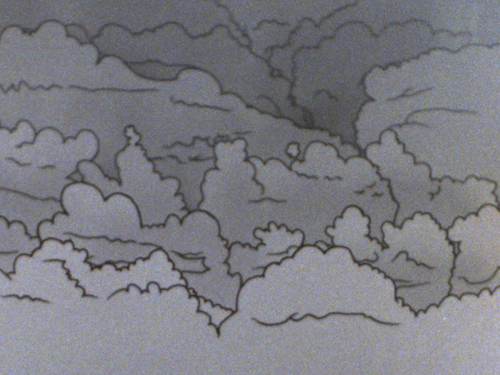
Jean-Paul Kelly
A Minimal Difference, 2012, 5:10 min.
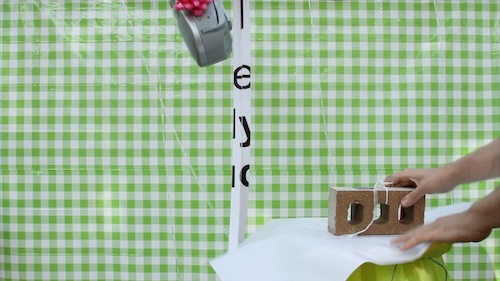
Robert Chase Heishman and Megan Schvaneveldt
ibid., 2011, 6:08 min.
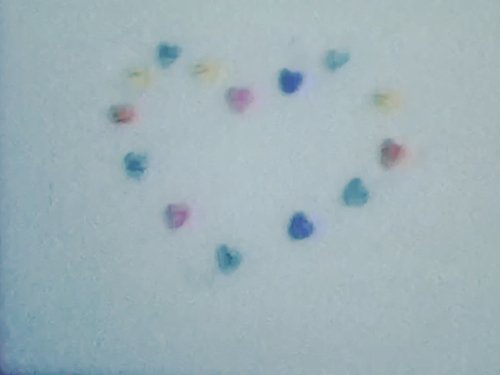
Stephanie Gray
I luved this city, 2000, 3:30 min.
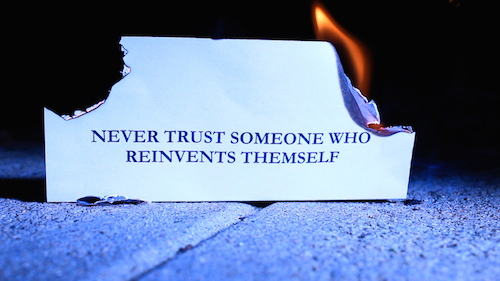
Christina Battle
Never trust someone who reinvents themself, 2014, 0:48 min.
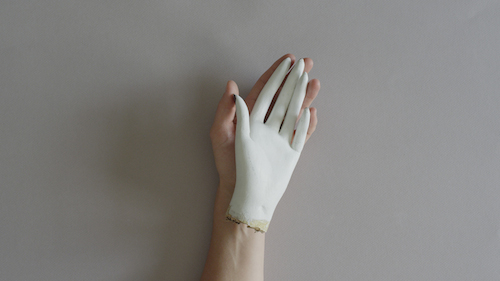
Annie MacDonell
The Fortune Teller, 2015, 15 min.
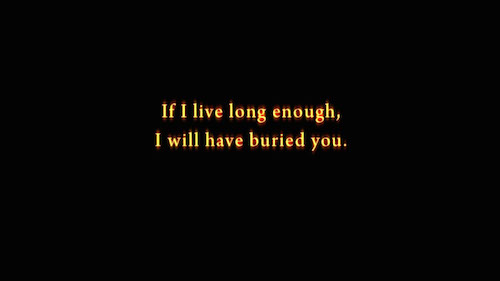
Steve Reinke
Living, Loving, Learning, 2010, 0:27 min.
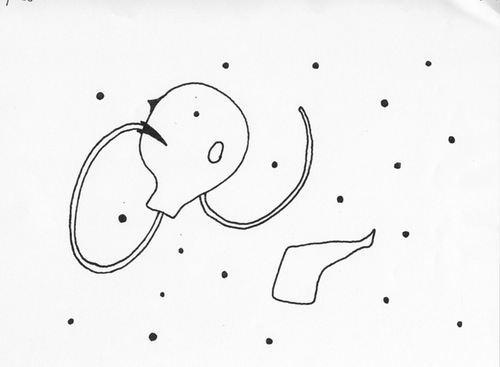
Jim Trainor
The Presentation Theme, 2008, 14 min.
Artist Biographies
Originally from Edmonton (AB), Christina Battle is currently based in London (ON). She has a B.Sc. with specialization in Environmental Biology from the University of Alberta, a certificate in Film Studies from Ryerson University and a MFA from the San Francisco Art Institute. Her works are often inspired by the role of official and non-official archives, our notions of evidence and explore themes of history and counter-memory, political mythology and environmental catastrophe. She has exhibited internationally in festivals and galleries, most recently at: Le Centre des arts actuels Skol as part of Le Mois de la Photo à Montréal (Montreal), Thames Art Gallery (Chatham, ON), Casa Maauad (Mexico City); SOMArts (San Francisco); Third Space Gallery (New Brunswick); RL Window Gallery (New York); Redline Gallery (Denver); Deluge Contemporary Art (Victoria, BC); The ODD Gallery (Dawson City, YT); Gallery 44 (Toronto); WNDX Festival of Moving Image (Winnipeg); The Images Festival (Toronto); MCA Denver; the Aspen Art Museum; and the Ryerson Image Centre (Toronto). Christina is currently working toward a Ph.D. in Art & Visual Culture at the University of Western Ontario.
Stephanie Gray is a poet-filmmaker and the author of a poetry collection, Heart Stoner Bingo (Straw Gate Books, 2007), and a chapbook, I Thought You Said It Was Sound/How Does That Sound? (2012), published by Portable Press at Yo-Yo Labs, which also published her second full-length collection with images from her films, Shorthand and Electric Language Stars (June 2015). A chapbook from Argos Books, A Country Road Going Back in Your Direction, was also published in June 2015. Her short super 8 experimental films, often about the city, class, and queer or feminist themes, have screened internationally. She had a film retrospective at Anthology Film Archives (NYC) in June 2015.
Robert Chase Heishman is an artist working in Chicago, Illinois. He completed his BFA from the Kansas City Art Institute in 2008 and his MFA from Northwestern University in 2012. He has collaborated with the Merce Cunningham Dance Company as a Décor artist on the work, Split-Sides, provided artwork for Icelandic band Sigur Rós’ album BA BA TI KI DI DO, and exhibits both nationally and internationally. His work is held in the collections of the Nelson-Atkins Museum of Art and the Walker Art Center.
Jean-Paul Kelly (Canadian, b. 1977) is an artist exploring the relationship between materiality and perception. The videos, drawings, and photographs that Kelly makes pose questions about the limits of representation by examining complex associations between found photographs, videos, and sounds from documentaries, photojournalism, and online media streams. His work has exhibited at the Wexner Center for the Arts (Columbus), The Power Plant (Toronto), Vox Populi (Philadelphia), Scrap Metal Gallery (Toronto), Mercer Union (Toronto), Gallery TPW (Toronto) and Tokyo Wonder Site. Recent screenings include New York Film Festival, Toronto International Film Festival, SBC Gallery (Montreal), Nightingale Cinema (Chicago), the Seoul Museum of Art, and the International Film Festival Rotterdam. He was a guest artist at the 2013 Robert Flaherty Film Seminar and will be a resident at the Delfina Foundation (London) in 2015. Kelly received the 2014 Kazuko Trust Award from the Kazuko Trust and the Film Society of Lincoln Center.
Annie MacDonell is a visual artist whose practice includes photography, film, installation, performance and sculpture. MacDonell’s work questions the constitution, function, and circulation of images in the 21st century. She received a BFA from Ryerson University’s School of Image Arts in 2000, followed by graduate studies at Le Fresnoy, Studio National des Arts Contemporains, in France. Recent performances have been presented at le Centre Pompidou, in Paris, and the Scotiabank Contact Festival, in Toronto. Recent solo shows have been held at Mulherin New York, the Art Gallery of Ontario, the Art Gallery of Windsor and Mercer Union Gallery, in Toronto. She has participated in recent group exhibitions at la Bibliothèque National in Paris, The Power Plant, Toronto, the MOCA Cleveland, the Daegu Photo Biennale in South Korea and Le Grand Palais, Paris. In 2012 and 2015, she was long-listed for the Sobey Art Award. In 2012 she was short-listed for the AGO AMIA prize for photography. She teaches in the photography program at Ryerson University and her work is represented by Katharine Mulherin Contemporary Art.
Jesse McLean (born 1975, in Philadelphia) is a media artist and educator whose research is motivated by a deep curiosity about human behavior and relationships, especially as presented and observed through mediated images. Interested both in the power and the failure of the mediated experience to bring us together, McLean's work asks the viewer to walk the line between voyeur and participant. She has presented her work at museums, galleries, and film festivals worldwide, including the International Film Festival Rotterdam, The Netherlands; Venice Film Festival, Italy; Transmediale, Berlin; 25 FPS Festival, Zagreb, Croatia; European Media Arts Festival, Osnabrück, Germany; Contemporary Art Museum, St. Louis; Interstate Projects and PPOW Gallery, New York; Museum of Contemporary Art, Detroit; Gallery 400, Chicago; Impakt, Utrecht, The Netherlands; CPH:DOX, Copenhagen; Kassel Documentary Film and Video Festival, Kassel, Germany; and the Contemporary Arts Center, Cincinnati, OH. She was the recipient of the Ghostly Award at the 2011 Images Festival and the Barbara Aronofsky Latham Award for Emerging Experimental Video Artist at the 2010 Ann Arbor Film Festival. She is assistant professor in the Department of Cinema and Comparative Literature at University of Iowa.
Megan Schvaneveldt is an artist living and working in Kalispell, Montana. She holds her MFA from Northwestern University (2012). Her work has been shown at ‘Painting in Time’, Sullivan Galleries, Chicago, 2016 and the Tetley Gallery, Leeds, UK, 2015; ‘PLAY’, Columbus Museum of Art, Columbus, OH, 2014; 'Rough and Ready', Museum of Contemporary Art, Chicago, 2014; ‘Of This Place, Or Thereabouts’, Roots & Culture, Chicago, 2013; ‘for those who believe in telekinesis, raise my hand’, Propeller Centre for Visual Arts, Toronto, 2013; and ‘Fakin’ It’, Meyers Gallery, University of Cincinnati,2012.
Steve Reinke is an artist and writer best known for his videos. His work is screened widely and is in several collections, including the Museum of Modern Art (New York), the Pompidou (Paris), and the National Gallery (Ottawa). His tapes typically have diaristic or collage formats, and his autobiographical voice-overs share his desires and pop culture appraisals with endearing wit. Born in a village in northern Ontario, he is currently associate professor of Art Theory & Practice at Northwestern University. In the 1990s he produced the ambitious omnibus The Hundred Videos (1996), and a book of his scripts, Everybody Loves Nothing: Scripts 1997-2005 was published by Coach House (Toronto). He has also co-edited several books, including By the Skin of Their Tongues: Artist Video Scripts (co-edited with Nelson Henricks, 1997), Lux: A Decade of Artists' Film and Video (with Tom Taylor, 2000), and The Sharpest Point: Animation at the End of Cinema (with Chris Gehman, 2005).
Jim Trainor is a filmmaker, mostly an animator, living in Chicago. He is completing a series of films called The Animals and their Limitations, of which Harmony is the latest installment, with The Bat and the Virgin, The Bats, The Moschops and The Magic Kingdom its predecessors. Most recently, he has been working on a long comic strip project called Sun Shames Headhunting Moon. Jim Trainor teaches at the School of the Art Institute of Chicago. Trainor is the recipient of the Alpert Award in the Arts for Film/Video, 2010.
Contemporary art, visual culture, and art history have long played an important role in facilitating constructive social, political, and diverse cultural conversations.
As such, McIntosh Gallery stands by its responsibility to support the artistic freedom of all exhibiting artists by providing a safe and respectful space for them to express themselves and showcase their work and research. The works in these exhibition express the views of their creators and do not reflect the position of McIntosh Gallery or Western University.


